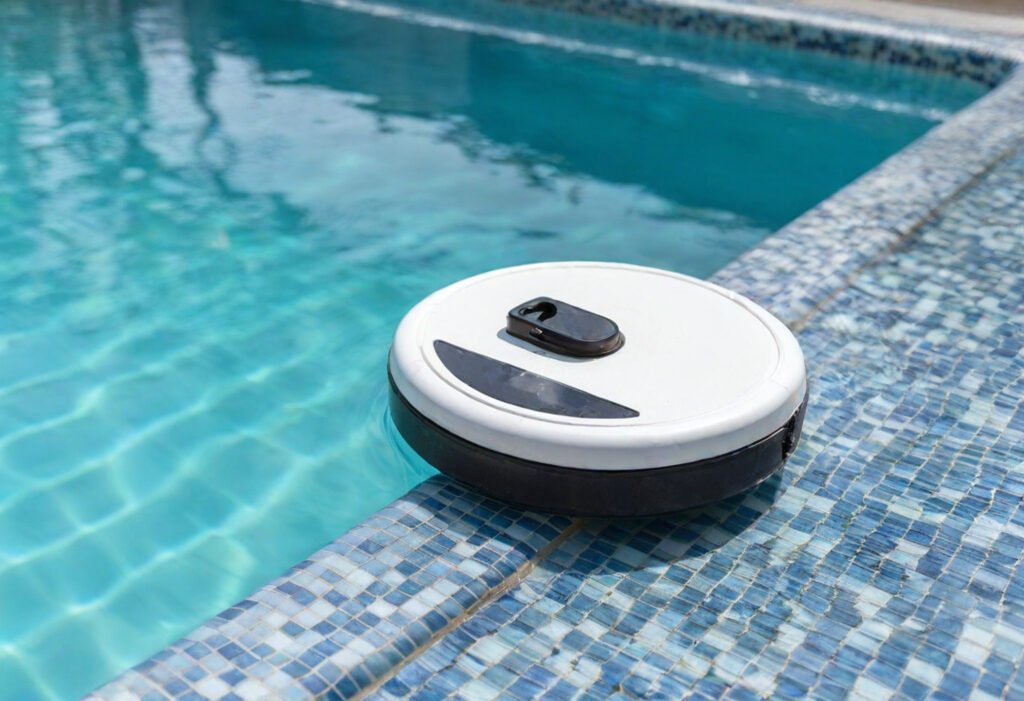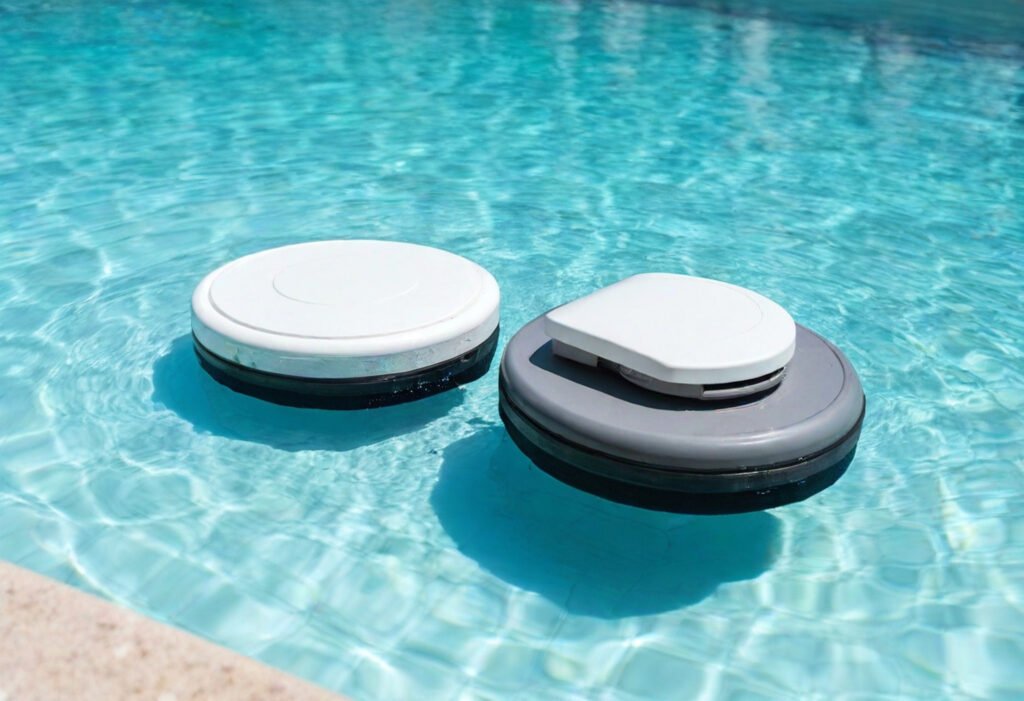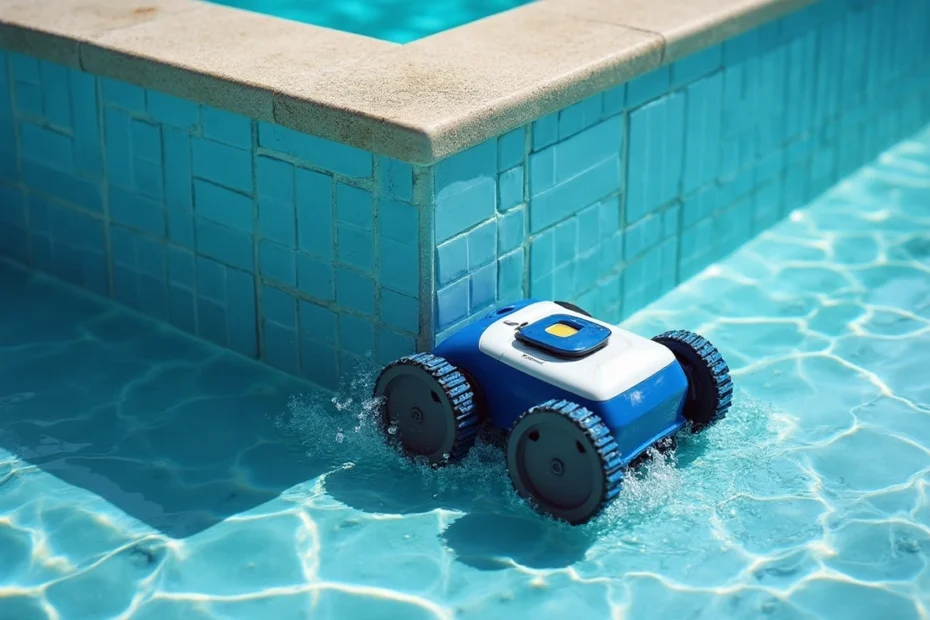Pool cleaning has changed dramatically since the days of manual scrubbing. Back in the 1950s, pool owners needed endless hours to keep their pools clean. These days, robotic drain cleaners do all the heavy lifting. They tackle everything from microscopic algae to invisible dust particles.
Technology has made great strides, but many pool owners still face issues with stubborn corners where debris accumulates. We all know the frustration when a robotic pool cleaner gets stuck on the main drain or misses those hard-to-reach spots. The latest automated cleaners come equipped with advanced sensors and powerful scrubbing brushes. Yet they sometimes need a helping hand to work their best.
This piece will teach you everything about using robotic drain cleaners effectively in those challenging corners. You’ll learn what to do when your robotic pool cleaner gets stuck on a drain and how to properly use a drain removal tool. We’ll look at various options – from suction-side cleaners that have cleaned pools for decades to smart devices that climb walls and direct themselves through corners. These solutions will help keep your pool crystal clear.
Why Pool Corners Are So Hard to Clean
Those tight 90-degree angles in your pool make perfect hiding spots for all sorts of unwanted materials. Pool corners create unique challenges that even the best cleaning equipment doesn’t deal very well with. Let’s look at why these spots become such stubborn problem areas.
Common debris buildup zones
Pool corners naturally collect all kinds of debris. Fallen leaves, twigs, dirt, and tiny particles keep piling up in these spots. On top of that, sharp angles create dead zones where water circulation is minimal, so debris settles without getting disturbed.
These trouble spots include:
- Wall-floor junctions where rectangular pools meet
- Steps and built-in seating areas
- Around ladders and other pool fixtures
- Corners with irregular or damaged surfaces
These same zones often develop algae problems, especially green algae, that run in areas with poor circulation. Pink algae (which are bacteria) target corners and crevices, while mustard algae stick to walls in shaded areas.
Why traditional cleaners miss corners
Most pool cleaners’ design makes corner cleaning almost impossible. Traditional cleaners move randomly—they go wherever momentum takes them—which means they often skip corners. Plus, most vacuum heads have rounded shapes that just can’t reach into tight corners.
Pool cleaners with simple navigation systems (using only gyroscopes or bumpers) follow basic patterns: go straight, hit something, turn, repeat. This works fine for perfect rectangles but fails with kidney shapes, sun shelves, or angular corners.
Pool robots often get stuck when they try to reach corners. The geometry just doesn’t work—they get trapped over and over in the same spots because they can’t guide themselves through tight angles.
Effect on water quality and esthetics
Dirty corners eventually affect your whole pool. Uncleaned debris uses up chlorine faster, forcing you to use more chemicals and making maintenance get pricey. Dirty corners become breeding grounds for bacteria and algae that can spread through your pool.
Health concerns aside, dirty corners change your pool’s look by a lot. Even a little debris can make water look cloudy or discolored. The mental benefits people want from a clean pool fade faster when corners stay visibly dirty.
Clean corners aren’t just about looks—they’re crucial to maintaining water quality and making your pool system last longer.
How Robotic Drain Cleaners Work

“If you have a big or complicated pool with a lot of features, I love the advanced AI navigation of the Beatbot AquaSense 2 Ultra. It’s overkill for smaller pools, but its performance is seriously impressive.” — Camryn Rabideau, Product Tester and Writer, The Spruce
Robotic drain cleaners work differently from their traditional counterparts. These smart devices work independently with advanced technology that cleans those hard-to-reach corners. The way we maintain our pools has changed because of these autonomous machines.
Built-in motors and suction systems
Every robotic drain cleaner uses powerful low-voltage motors that serve two key functions. These motors power the wheels or roller tubes that move the cleaner across pool surfaces. They also create the suction needed to vacuum debris – models like the Dolphin Premier can clean over 4,500 gallons per hour.
These cleaners plug into a GFCI outlet instead of your pool’s pump system. This independence helps your pool’s filtration system last longer and cuts down on energy use.
Wall-climbing and corner navigation
Quality robotic cleaners excel at cleaning corners by climbing vertical surfaces. They use rubber tracks or special wheels that grip pool walls firmly. This combination of good traction and precise suction lets them climb walls easily.
Smart navigation systems like SmartNav 2.0 map your pool’s layout to create smart cleaning paths. High-end models use ultrasonic sensors and gyroscopes to detect walls and obstacles. This technology helps them clean curved surfaces and reach tight corners.
Internal filtration vs. pool system reliance
The biggest difference between robotic and traditional cleaners lies in how they filter water. Robotic cleaners have their filter canisters that catch debris as small as 2 microns. This keeps debris from reaching your pool’s main filter.
This self-contained design brings several benefits:
- Your pool’s filtration system lasts longer
- You won’t need to clean filters as often
- It catches tiny particles other systems miss
- You can remove debris without backwashing
You can empty the internal filter by opening the top case, taking out the filter basket, and cleaning it with a hose.
Key Features That Help Clean Stubborn Corners
“This model can scrub down the walls and floor of your pool and pick up very fine debris thanks to a dual filter system, and it does it all without a power cable.” — Camryn Rabideau, Product Tester and Writer, The Spruce
Modern robotic drain cleaners feature specialized capabilities that target frustrating corners. These state-of-the-art features make the difference between a partially clean pool and one that sparkles from edge to edge.
Smart navigation and mapping
The best robotic pool cleaners employ advanced navigation systems like SmartNav 2.0 to scan and map your pool. They create optimal cleaning paths for maximum efficiency. These cleaners use intelligent algorithms to ensure detailed coverage of every inch of your pool. High-end models feature SmartNav 3.0 and gyroscopic technology that maintains precise orientation while cleaning. This allows them to clean corners with remarkable accuracy.
Deep-scrubbing brushes and dual motors
Powerful dual motors are the foundations of effective corner cleaning. Premium models output over 4,500 gallons per hour. These motors power dual scrubbing brushes that deliver twice the cleaning power and tackle stubborn dirt on every surface. Commercial-grade motors deliver superior suction and performance, which leaves even the tightest corners impeccably clean.
Obstacle detection and anti-tangle tech
Ultrasonic sensors help robotic cleaners detect and avoid obstacles effectively. Advanced models like the Beatbot combine 16 high-precision sensors, including ultrasonic sensors, for superior obstacle detection. Patented 360° Anti-Tangle Swivel technology prevents power cords from knotting. This ensures uninterrupted cleaning even in tight spaces.
Handling different pool surfaces
Robotic cleaners work effectively on pools of all shapes including rectangular, round, kidney, and free-form pools. Their versatility extends to different materials, with specialized brushes that clean safely without damaging pool surfaces.
Microscopic debris removal
Advanced filtration systems like NanoFilters capture the smallest particles and debris. These sophisticated filters trap particles as small as 150 micrometers. This ensures crystal-clear water free from microscopic contaminants.
Energy-efficient operation
These powerful cleaners minimize energy consumption while operating independently from your pool’s pump system. This reduces the load on your existing equipment and delivers superior cleaning results. Many models include programmable timers to schedule cleaning cycles for optimal efficiency.
Troubleshooting Common Issues

Robotic drain cleaners, despite their advanced features, can face operational problems. Time and frustration can be saved by knowing how to fix common problems.
Robotic pool cleaner stuck on drain: causes and fixes
Pool robots getting stuck on drain covers remains a prominent problem that lacks guaranteed solutions. Basic physics explains the main cause—the cleaner’s suction creates a vacuum effect over raised drain covers. A cleaner that gets stuck frequently might have issues with its motor, tracks, or brushes that affect its movement.
How to use drain removal tool safely
Stuck cleaners can be freed safely using specialized drain removal tools without causing damage. These tools come with a long pole and an adapter that connects to the cleaner. The unit can be dislodged from the drain by applying gentle upward pressure. A shop vac helps clear debris for stubborn blockages. Steady, gentle pressure works best—forceful pulling or jerking could damage internal parts.
What to do when your robotic pool cleaner gets stuck on the main drain
Most users find that a stuck cleaner needs manual help with a pole if it doesn’t break free within minutes. Built-in mechanisms designed to help units float free don’t always deliver results. A device that suddenly starts getting stuck could signal worn tracks, brushes, or drive belts that need replacement.
Tips to prevent future issues
These steps help minimize drain-related problems:
- A Unibridge drain cover creates a smoother surface for cleaners to move across
- Drain ramps help cleaners move over drain obstacles
- Lower-profile alternatives might work better based on your drain cap’s size
- Small weights added to floating cleaners’ front maintain proper balance
- Proper hose length prevents repeated sticking by providing an adequate cleaning range
Note that drain covers play a crucial safety role—removing them to fix cleaner issues puts safety at risk.
Conclusion
Pool corners don’t have to be a headache anymore. This piece explores why corners are so tricky to clean and how modern robotic drain cleaners can solve these problems. These tech marvels have evolved substantially from the old days of manual scrubbing.
Smart navigation systems, powerful scrubbing brushes, and obstacle detection make robotic cleaners great at handling those tricky 90-degree angles where dirt likes to collect. All the same, even the best models can run into issues, especially when you have drain blockages or unusual pool shapes.
Most problems have quick fixes. The right drain removal tools help free stuck cleaners without damaging them. You can also prevent issues by installing Unibridge drain covers or adding drain ramps to substantially reduce future problems.
A good robotic drain cleaner’s value goes beyond just clean corners. These machines work independently from your pool’s filtration system. This can extend your equipment’s life and lower energy costs. They catch even the tiniest particles to keep water sparkling from one end to the other.
Clean corners make your pool look better and create a healthier swimming environment. While robots have revolutionized pool maintenance, you still need to know how to get the most from your cleaner, particularly in those tough corners. The knowledge from this piece will help you enjoy a spotless pool—corners included.
